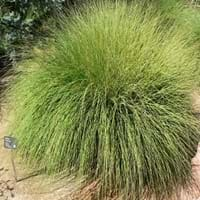Life Span
Perennial
Perennial
Origin
Eastern Europe
Southwestern United States
Types
Not Available
Not Available
Habitat
Terrestrial
Sandy areas
USDA Hardiness Zone
4-9
7-11
Sunset Zone
1a, 1b, 2a, 2b, 3a, 3b, 4, 5, 6, 7, 8, 9, 10, 11, 12, 13, 14, 15, 16, 17, 18, 19, 20, 21, 22, 23, 24
7, 8, 9, 10, 11, 12, 13, 14, 15, 16, 17, 18, 19, 20, 21, 22, 23, 24
Habit
Clump-Forming
Clump-Forming
Minimum Height
Not Available
Minimum Width
Not Available
Flower Color
Yellow, Lavender, Blue Violet
Non Flowering Plant
Flower Color Modifier
Bicolor
Bicolor
Fruit Color
Not Available
Non Fruiting Plant
Leaf Color in Spring
Green, Sea Green
Green
Leaf Color in Summer
Green, Sea Green
Light Green
Leaf Color in Fall
Green, Sea Green
Green
Leaf Color in Winter
Light Green
Green
Leaf Shape
Lanceolate
Long linear and narrow
Plant Season
Spring, Summer
Summer, Fall
Sunlight
Full Sun, Partial Sun
Full Sun, Partial Sun
Growth Rate
Medium
Medium
Type of Soil
Loam, Sand
Clay, Loam, Sand
The pH of Soil
Neutral
Acidic, Neutral, Alkaline
Soil Drainage
Well drained
Well drained
Bloom Time
Spring, Late Spring, Early Summer
Late Spring, Early Summer, Summer
Tolerances
Drought
Drought
Where to Plant?
Ground
Container, Ground, Pot
How to Plant?
By dividing rhizomes, tubers, Seedlings
Seedlings
Plant Maintenance
Medium
Low
Watering Requirements
Average Water Needs, Do Not over Water
Requires watering in the growing season, Water occasionally
In Summer
Lots of watering
Lots of watering
In Spring
Moderate
Moderate
In Winter
Average Water
Average Water
Soil pH
Neutral
Acidic, Neutral, Alkaline
Soil Type
Loam, Sand
Clay, Loam, Sand
Soil Drainage Capacity
Well drained
Well drained
Sun Exposure
Full Sun, Partial Sun
Full Sun, Partial Sun
Pruning
Remove damaged leaves, Remove dead branches, Remove dead leaves
Prune if you want to improve plant shape, Remove damaged leaves, Remove dead branches, Remove dead leaves
Fertilizers
All-Purpose Liquid Fertilizer
fertilize in spring
Pests and Diseases
Red blotch
Red blotch
Plant Tolerance
Drought
Drought, Heat Tolerance
Flower Petal Number
Single
Single
Foliage Texture
Coarse
Fine
Foliage Sheen
Matte
Matte
Attracts
Hummingbirds
Birds, Deers, Insects
Allergy
Skin irritation
no allergic reactions
Aesthetic Uses
Showy Purposes
Beautification, Ground Cover, Landscape Designing, Showy Purposes
Beauty Benefits
Not Available
Not Available
Environmental Uses
Air purification
Food for animals, Nesting sites for birds, Shelter for wildlife
Medicinal Uses
No Medicinal Use
Sore throat
Part of Plant Used
Not Available
Leaves, Root
Other Uses
Used as Ornamental plant
Can be made into a herbal tea, Decoration Purposes, Showy Purposes, Used as Ornamental plant
Used As Indoor Plant
No
Yes
Used As Outdoor Plant
Yes
Yes
Garden Design
Alpine, Edging, Mixed Border, Rock Garden, Wall
Feature Plant, Foundation, Groundcover, Mixed Border, Wildflower
Botanical Name
IRIS pumila
MUHLENBERGIA rigens
Common Name
Dwarf Iris
Deer Grass
In Hindi
Dwarf Iris
हिरण घास
In German
Zwergiris
Deer Grass
In French
Dwarf Iris
cerfs Herbe
In Spanish
Enano Iris
Ciervo Hierba
In Greek
νάνος Ίρις
ελάφια Grass
In Portuguese
Dwarf Iris
cervos grama
In Polish
Dwarf Iris
Deer Trawa
In Latin
Iris Dwarf
deer Grass
Phylum
Magnoliophyta
Anthophyta
Class
Liliopsida
Liliopsida
Clade
Angiosperms, Monocots
Angiosperms, Commelinids, Monocots
Tribe
Irideae
Not Available
Subfamily
Iridoideae
Chloridoideae
Number of Species
Not Available
Not Available
Importance of Dwarf Iris and Deer Grass
Want to have the most appropriate plant for your garden? You might want to know the importance of Dwarf Iris and Deer Grass. Basically, these two plants vary in many aspects. Compare Dwarf Iris and Deer Grass as they differ in many characteristics such as their life, care, benefits, facts, etc. Every gardener must at least have the slightest clue about the plants he wants to plant in his garden. Compare their benefits, which differ in many ways like facts and uses. The medicinal use of Dwarf Iris is No Medicinal Use whereas of Deer Grass is Sore throat. Dwarf Iris has beauty benefits as follows: Not Available while Deer Grass has beauty benefits as follows: Not Available.
Compare Facts of Dwarf Iris vs Deer Grass
How to choose the best garden plant for your garden depending upon its facts? Here garden plant comparison will help you to solve this query. Compare the facts of Dwarf Iris vs Deer Grass and know which one to choose. As garden plants have benefits and other uses, allergy is also a major drawback of plants for some people. Allergic reactions of Dwarf Iris are Skin irritation whereas of Deer Grass have no allergic reactions respectively. Having a fruit bearing plant in your garden can be a plus point of your garden. Dwarf Iris has no showy fruits and Deer Grass has no showy fruits. Also Dwarf Iris is flowering and Deer Grass is not flowering . You can compare Dwarf Iris and Deer Grass facts and facts of other plants too.





